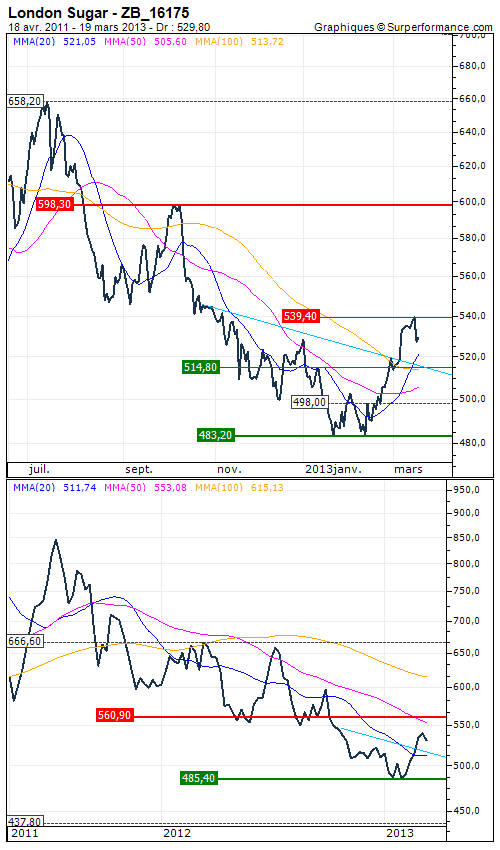S&P GSCI Sugar Index : Politics and lobbying get involved
By Patrick Rejaunier
However, the growth rate of world consumption increases by 2% per year, although geographic differences appear with European area large consumer of sugar but with a negative trend.
Conversely, demand from emerging markets exploded with an increase in India and China nearly 200% in 30 years. These trends should not lead us to forget that the per capita consumption in mature countries is still much higher (80 lb per capita against a world average of 48 lb). There is a clear link between consumption and the level of economic activity.
In addition, the appreciation of the dollar in recent weeks has tended to reduce the value of raw materials.
Besides, United States, in phase of overproduction of sugar, were obliged to take measures to avoid a decrease in prices (buy the surplus stocks). This situation describes the constraints faced by operators in the sugar market. Policy measures are not isolated in the sugar industry where lobbying is intense. Indeed, multinationals have considerable means to counter any "anti-sugar crusade". This global context, policy and lobbying, leads to a market regulated by decisions sometimes not in line with the physical market. This framework should allow future contracts to regain momentum knowing that there is many different outlets for the sugar and that future innovations about this processed product could increase price elasticity.
Graphically on the European contract, the London Sugar, prices begin to implement a dynamic recovery as shown by the double bottom on the USD 483.2 support which should drive the future contract towards USD 600. However, a stop loss will be set below the USD 510 to avoid a bearish reversal.


 S&P GSCI SUGAR INDEX
S&P GSCI SUGAR INDEX 





